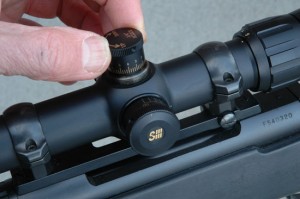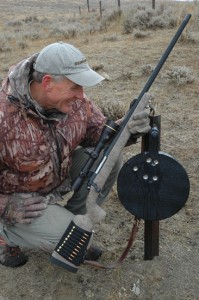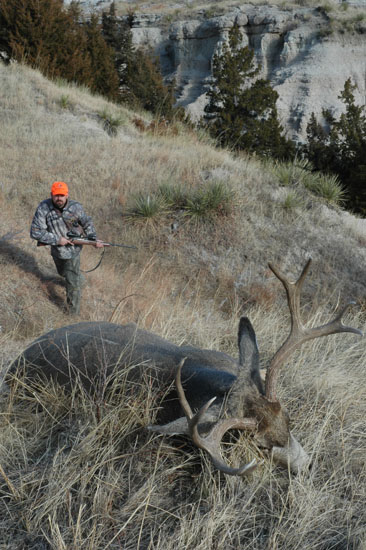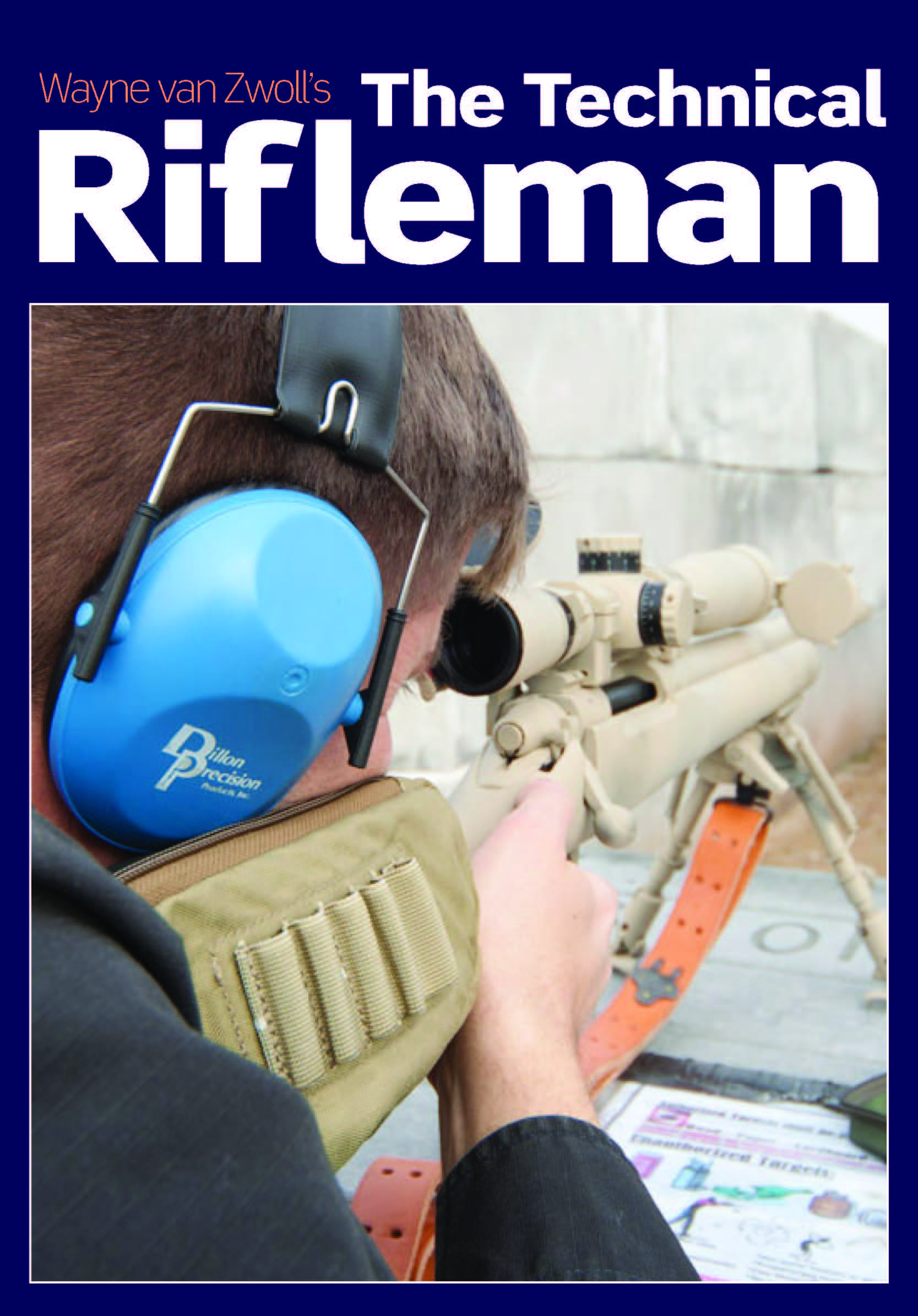

Bullets travel in arcs. You knew that. Actually, they’re parabolic arcs. A bullet drops faster as it goes farther.
Well, not really. Gravity determines how fast a bullet drops, and its force doesn’t change over the course of a bullet’s flight. But the arc does get steeper at distance. Why?
Gravity's Effect on Bullet Trajectory
Consider the bullet not as a rocket but as a fragment driven by an explosion. This spinning shard exiting the muzzle at, say, 3,000 feet per second (fps) hurtles headlong into a dam of air that resists penetration. When you swim, you feel resistance. It’s more palpable when you cannonball off the high-dive or take a spill behind the ski-boat.

Air isn’t as thick as water, but you’ll feel it when you reach outside an automobile window. At 60 miles per hour, that car is traveling 88 fps. A bullet at 3,000 fps is moving 34 times as fast. The headwind it meets is 34 times stronger than what you feel against your hand at highway speed.
Because a bullet has no rocket, it begins to decelerate as soon as the powder’s thrust loses out to air resistance on its nose and air friction on its sides. At the same time, gravity starts hauling the bullet to earth. Clearing the muzzle, that bullet starts to drop immediately, at an accelerating rate of 32.16 feet per second.
But few bullets stay aloft for a full second. A 7mm magnum bullet started at 3,150 fps reaches a deer 250 yards off in a quarter-second; given deceleration that brings average velocity to 3,000 fps. During that quarter-second, the bullet drops three feet (not eight feet, as gravity pulls it faster and farther the last quarter-second than the first).
If your line of sight were parallel to line of bore, the bullet would strike three feet low. A slower bullet drops the same distance in the same interval. It just doesn’t go as far. Say your .308 bullet clocks an average 2,400 fps over its first 200 yards. Instead of landing three feet low at 250 yards, it prints three feet low at 200.
The slower a bullet goes the less ground it covers per unit of time. Because a bullet decelerates, it gives gravity more time per unit of distance at the far end of its arc. That’s why the arc is steeper there. If you dropped a bullet from your fingers next to a rifle just as a bullet was fired horizontally from that rifle, the two bullets would come to earth at very nearly the same time.
Seeing a bullet’s arc is a distinct advantage in learning about trajectory. That’s why machine guns and anti-aircraft cannons are fed tracer bullets. Drift and deceleration show up in tracer paths. Air gunners trained during World War II were often started with BB guns that made trajectory visible.
Distance's Effect on Bullet Trajectory

Distance lays a heavy hand on bullets. A .30-06 zeroed at 200 with 180-grain Partitions at 2,700 fps puts them 50 inches low at 500 yards, 400 inches low at 1,000 (double the range, but eight times the drop).
A .300 Winchester launching the same bullet at 2,960 gives up 43 inches at 500 and 352 at 1,000. While speed flattens arc, the rate of deceleration matters, too. A heavy bullet started slower than a lightweight bullet of the same shape and diameter drops more steeply at modest ranges. Farther out, a heavy bullet can actually pass its lighter counterpart. Its momentum is greater. It has a higher ballistic coefficient and a lower rate of deceleration. So drop at very long range is less with the heavy bullet.
Many shooters have been bamboozled into thinking a bullet rises above line of bore during flight. Nope. The misunderstanding results from trajectory illustrations that aren’t carefully drawn. Sight-line is not parallel to bore-line, but at a slight converging angle. Sight-line dips below bore-line and the bullet’s arc. Sight-line never meets bore-line again, as both are straight. They cross once and forever diverge. A bullet travels above sight-line at midrange because the sight-line tilts down through the trajectory. Later, the bullet drops below sight-line.
Temperature's Effect on Bullet Trajectory

Temperature affects trajectory. Warm air is thinner than cold, so your bullet meets less resistance on a warm day, just as an airplane gets less lift on a warm day. But the effect of extreme heat or cold on bullet placement has little to do with the influence of air temperature on flight. Figure no more than half a minute of elevation for every 100-degree change in temperature.
A bigger change caused by temperature results from its influence on breech pressure. Pre-heated powder generates higher pressure. A chilly day can make the cartridge perform sluggishly. Tests run by Art Alphin (A-Square) with a .30-06 showed that at 40 degrees a charge of 51 grains RL-15 generated 54,600 psi to push 180-grain Nosler Ballistic Tips at 2,675 fps.
That rifle and load registered 59,900 psi and 2,739 fps with the air temperature at 120 degrees. Cartridges left on a hot dashboard in a safari vehicle can get much warmer than the rifle and cause higher pressures than the thermometer suggests. Rule of thumb: three fps for every degree of temperature change.
Altitude's Effect on Bullets
Altitude also influences bullet flight. The higher you go, the thinner the air and the less resistance it offers. But as you climb to thinner air, temperatures usually drop. So elevation and temperature changes can cancel each other. In the mountains, air resistance can be greater because of the cold and less because of the elevation.
Technical Rifleman Digital Download
 Did you enjoy this blog post? Now is your chance to own Wayne van Zwoll's entire article series — The Technical Rifleman. The entertaining and informative blog ran for a year on GunDigest.com, but was a lifetime in the making. The articles tap into the renown gun writer's limitless knowledge of rifles and shooting, covering a wide range of topics, from picking the right rifle scope to figuring out a gun's recoil. The Technical Rifleman is certain to round out any rifle enthusiast's library. Pick up yours today!
Did you enjoy this blog post? Now is your chance to own Wayne van Zwoll's entire article series — The Technical Rifleman. The entertaining and informative blog ran for a year on GunDigest.com, but was a lifetime in the making. The articles tap into the renown gun writer's limitless knowledge of rifles and shooting, covering a wide range of topics, from picking the right rifle scope to figuring out a gun's recoil. The Technical Rifleman is certain to round out any rifle enthusiast's library. Pick up yours today!
![]() Buy the Kindle version of The Technical Rifleman here!
Buy the Kindle version of The Technical Rifleman here!

![Best Concealed Carry Guns In 2025 [Field Tested] Wilson Combat EDC X9S 1](https://gundigest.com/wp-content/uploads/Wilson-Combat-EDC-X9S-1-324x160.jpg)


![Best 9mm Carbine: Affordable PCCs [Tested] Ruger Carbine Shooting](https://gundigest.com/wp-content/uploads/Ruger-Carbine-Shooting-100x70.jpg)


Wayne,
It would seem to me that a temperature rise would result in a change to the bullet/barrel interference fit due to increased bullet diameter and reduced barrel bore size. A rise of 25 degrees would cause a combined change of about 1.5 ten-thousandths which would have to increase chamber pressure, probably more than the warmed powder theory.
bangorbillc
Hi,
If I remember my psysics 101 correctly, (witch would be surprising after 50 years !)
distance fallen is :
:d= 1/2 of g times t square
for one fourth of a second it is around a foot of drop
not three feet as you state in the beginning of your article
see :
https://www.gravitycalc.com/
I studied math so I know the calculation of the bullet based upon speed and gravity. I have never seen any mathematical description of the effects of air resistance and altitude nor temperature. Are there any such formulas that are simple enough for bachelor degree math guy to understand?
Straight velocity and gravity says my 9mm handgun drops about 6 inches in 100 yards without windage, temp. or alt.
Concerning the effect of wind resistance, the situation is actually worse than stated. Every time the wind speed doubles, the wind resistance is squared.